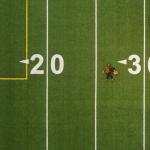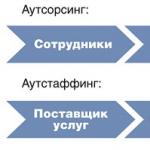How to evaluate a construction company. Construction equipment assessment. List of documents required for assessing repair equipment
Construction machinery and equipment are the most important asset any construction company. The assessment of this equipment involves an examination, as a result of which its exact cost will be determined. The results of the inspection may be needed when pledging equipment, selling it, renting it out, or simply for accounting purposes.
What construction equipment is subject to assessment?
You can estimate the real value of anyone construction equipment. However, there are several main types of technology:
- Equipment for earthworks: earth-moving equipment, soil-compacting machinery or equipment for preparing land for work.
- Handling equipment: lifting mechanisms, loading and unloading equipment, transport equipment.
- Drilling equipment: various excavators, tractors, drilling rigs and other special equipment.
- Equipment for concrete and reinforced concrete works: machines and mechanisms that transport or mix concrete. This also includes equipment for fittings.
- Equipment for finishing works: mechanisms for plastering, painting or roofing work.
- Road equipment: devices for preparing or installing road surfaces.
In what cases is construction equipment assessed?
The need to conduct an examination to evaluate equipment arises with any legal actions related to it. For example, such an assessment is necessary when selling, purchasing or leasing equipment.
An assessment is also necessary when lending or insurance, since the price of equipment affects the size of payments, contributions, etc. Equipment is assessed when it is written off or the enterprise goes bankrupt.
Conducting an appraisal examination is necessary during legal proceedings for which the cost of the company’s equipment is important.
Plus, with the help of an assessment, company owners can find out the real cost of their accounting equipment.
List of documents required for assessing repair equipment
Before the experts begin their work, you must provide all the necessary documents.
First, you will need documents confirming that you are the owner of the construction equipment. Secondly, prepare a list of all equipment, in which for each piece of equipment indicate the make, model, serial number, year of manufacture and its characteristics. All information must be confirmed, so you will also need passports and documents for all equipment.
If an assessment has been carried out before, you will need the results and the cost of the equipment at that time. You will also need information about the repair of each piece of equipment, if any.
Order an estimate of the cost of construction equipment
The importance of assessing construction equipment is difficult to overestimate. It will not only allow you to form a competent pricing policy, but also to avoid possible financial losses.
At competitive prices, you can order an examination from our company Soyuz-Expert. As a result of the inspection carried out by our experts, you will receive an official document “Valuation Report”, which has legal force and contains evidence of the value of your equipment.
You can order an assessment or get a consultation in any way convenient for you: write to us by e-mail, call one of the contact numbers or contact our office directly.
Ask a question and experts will answer it.
Moscow 2013
Chapter 1. Theoretical basis business assessment of a construction organization
1.1. Characteristics and features of the business of a construction organization
According to the author's interpretation, business is proposed to be understood as a combination of the material component, represented by the enterprise as a property complex, and the intangible component, characterized by the efficient use of available resources. At the same time, the goal of a business is to create and increase the wealth of its owners or, which is the same, the value of the business.
Existing definitions of business as an activity aimed at making a profit do not take into account the fact of resource consumption in the process of making a profit, which is an omission.
At the same time, one cannot identify business and enterprise as Property Complex. The concept of “business” cannot be reduced to a set of raw materials and equipment for the production of certain products. The profit gained will largely depend on how effective the actions are to organize the work of the property complex.
In this regard, the author expressed a thesis about the influence of business efficiency on its market value. According to the author’s point of view, business efficiency is considered as the main criterion for its market value.
The author presented the relationship (Fig. 1) financial indicators business and its market value, which characterizes the integral nature of the value indicator . The goal of any investment, modernization of production and organizational structure of a business, mergers and consolidations is to increase sales volumes, reduce production costs, i.e. increase profits, assets and, as a consequence, the value of the business. The growth rate of business value reflects the efficiency of business development.
Fig.1. The relationship between the financial performance of a business and its market value.
The use of generally accepted financial indicators of a business and the determination of its market value make it possible to justify those areas on which the company’s management should focus its efforts in order to make adequate financial decisions to provide the business with a competitive advantage and increase its value.
1.2. Analysis legal framework and information base for assessing a construction organization
An assessment has been carried out and this report has been compiled in accordance with applicable
legislative and regulatory documents:
The problems of diagnosing the competitive position of any economic entity are difficult to overestimate due to the special influence of such an economic factor of activity as competition in various forms of its manifestation. And, despite the significant interest in this problem, the methodology for diagnosing competitive confrontations and their components, trends in the position of enterprises in the market segment and many other issues require specification, as well as taking into account domestic differences when introduced into management practice. In the construction market, competition manifests itself in such diverse forms (specific, price, seasonal surges of competition, etc.) that conclusions about the diagnosis of the state of an economic entity are possible only based on the results of multilateral studies of activity. The problematic aspects of economic diagnostics within the framework of a competitive position also include the assessment of business value, which is directly related to the formation stock market in the country as a necessary element of an integral economic system. This aspect of diagnosis most often relates to a separate task of entrepreneurship, but is fully a component in the system of factors that determine the state of an economic entity.
1.4. Analysis of existing approaches and methods for assessing the business of a construction organization
Federal assessment standard " General concepts assessments, approaches and requirements for assessment (FSO No. 1)", approved by Order of the Ministry of Economic Development of Russia dated January 1, 2001 No. 000, defines the income approach as “a set of methods for assessing the value of an assessment object, based on determining the expected income from the use of the assessment object" .
When applying the discounting method, future income streams of each period are converted to present value by discounting using an appropriate discount rate. The discount rate is a measure of investors' assessment of their requirements for return on invested capital, taking into account the risk of obtaining income characteristic of a given object. The discounted income method is usually applied to properties that have unstable income and expense streams.
When using the direct capitalization method, the amount of income for a typical year of operation of the property is divided by the appropriate capitalization rate. The capitalization method is most applicable to objects whose net income from the use is constant or changes at a constant rate.
The capitalization rate is determined, as a rule, on the basis of market data by identifying the relationship between annual income and the cost of similar properties. It is also possible to use the cumulative construction method.
Unfinished construction project
Using the income approach to assess the value of properties requires the existence of a developed rental market for similar assets, or information about the functioning and profitability of businesses in similar properties.
Knight Frank notes that, despite some uncertainty in the market, construction activity is at a high level, and an increase in the commissioning of new office space is predicted in 2013. The share of vacant space has reached pre-crisis levels. In 2013, investor interest in high-quality development projects at various stages of implementation is expected to grow.
Taking into account the above, the Appraiser came to the conclusion that, within the framework of this assessment, the income approach can be used with a sufficient degree of reliability to determine the value of an unfinished construction project. When performing calculations using the income approach, the discounted cash flow method was used.
Movable property
The income approach requires a forecast of future income for the remaining life of the assets being assessed. It is difficult to solve this problem directly, since income is created by the entire production system, which, along with the movable property being valued, includes other fixed assets that are not included in the object of evaluation - a hotel building, a kitchen and dining room, a land plot, etc.
Based on the above, the Appraiser decided to abandon the use of the income approach to determine the market value of movable property.
Cost approach, in definition Federal standard FSO No. 1 is a set of valuation methods. The comparative approach, as defined by the Federal Valuation Standard, FSO No. 1 is a set of methods for assessing the value of an appraised object, based on a comparison of the appraised object with analogous objects of the appraised object, for which price information is available. An object-analog of an object of assessment is an object that is similar to the object of assessment in terms of the main economic, material, technical and other characteristics that determine its value.
The comparative approach is based on the principle of substitution: the buyer will not pay for an object more than the amount required to purchase a similar object on the market that has the same utility. Prices paid for identical or similar objects serve as the initial information for calculating the value of the object being appraised.
The comparative approach is applied, as a rule, when there is a sufficient amount of reliable information about purchase and sale transactions or price offers.
This approach is implemented through a number of successive stages:
Collection of data on sales of objects similar to the object being assessed. Only by analyzing this data can we say to what extent real prices reflect market value;
Comparison of the assessed object and analogous objects according to individual elements of comparison;
Adjustment of actual sales prices of compared objects based on comparison elements. The adjustment is carried out from the analogue to the object being evaluated.
Once prices are adjusted, they can be used to determine the value of the property being appraised.
IN foreign practice It is generally accepted that valuation based on this approach gives the most reliable results, which is due to the stable state of the economy, a widely developed market and reliable information about completed transactions available to appraisers.
The degree of similarity between the valuation object and the analogue, as in the cost approach, is determined by the elements of comparison. In this case, the elements of comparison are not only the characteristics of the objects of comparison, but also the characteristics of transactions that cause changes in value.
Comparison elements are combined into groups:
Characteristics of the object: functional purpose, technical parameters, manufacturer, quality (certificate of conformity);
Object condition: age, cumulative wear and tear, technical condition, completeness, presentation;
Location: geographical location of the object, physical location of the object within the enterprise;
Market conditions: recession or rise, supply and demand ratio;
Conditions of sale: time of sale, place of sale, average market exposure time;
Characteristics of prices of analogue objects: availability of preferential lending, presence of transport and other costs of the seller in the price.
This valuation approach is based on determining market prices that adequately reflect the “value” of the object in its current condition. The basic principle used is the comparison that must be made:
With an exact analogue sold on the secondary market;
An approximate analogue sold on the secondary market, with corrective amendments made in the absence of an exact analogue;
An important step when using the comparative approach is the selection of comparable analogues and the use in calculations of adjustments for the difference in the technical indicators of analogues and the object being evaluated.
The main problems of this approach are due to the difficulties of obtaining the necessary information, namely current market prices, creating databases with the choice of analogues that are adequate for the objects being valued, taking into account the degree of discrepancy in the composition and numerical values of the characteristics of analogues and the objects being valued.
By applying a comparative approach, if there is a sufficient amount of reliable information about the sale of analogous objects, it is possible to obtain the market value of the valued object as accurately as possible for a specific market.
A necessary prerequisite for applying comparative approach methods is the availability of information on transactions with similar real estate objects (which are comparable in purpose, size and location) that occurred under comparable conditions (the time of the transaction and the conditions for financing the transaction).
The main difficulties in applying comparative methods are related to opacity Russian market real estate in terms of disclosing information about real transaction prices. In this situation, the Appraiser can focus on offer prices, since the potential buyer, before making a decision to purchase the property real estate, will analyze the current market offers and come to a conclusion about possible price of the property, taking into account all its advantages and disadvantages relative to comparison objects.
There are practically no comparable unfinished construction projects on the market. Due to the limited information available in the public domain on unfinished construction projects of similar functional purposes, the application of appropriate adjustments will not allow calculating the market value with a sufficient degree of reliability.
Using constructed buildings accepted for operation as analogues, followed by a proportional reduction in the offer price of analogous objects by the degree of incompleteness of the property being assessed (by 62%: 100% - 38%) will not allow taking into account market risks associated with organizing the completion of construction and the commissioning process object into operation.
Thus, having analyzed the volume and degree of reliability of the available information necessary to conduct an assessment using the comparative approach, the Appraiser came to the conclusion that within the framework of this assessment, the comparative approach cannot be implemented.
In 2012, the expert council assessed the company’s achievements in expanding the range of services to a new quality level, taking into account the needs of the market and maximum satisfaction of customer requests, which was noted Laureate diploma Republican competition « Best products Bashkortostan".
2.2. Analysis of the financial and economic activities of a construction organization
Key performance indicators of the Construction Company based on the results of 2011.
Table 1
Financial indicators for 2011:
Name | Indicators, thousand rubles. |
Net profit |
table 2
(balance sheet currency minus loans, accounts payable, deferred tax liabilities)
Long-term assets
(fixed assets, construction in progress, intangible assets), including:
Fixed assets
unfinished production
Current assets:
Accounts receivable
Cash
(inventories, accounts receivable, cash), including:
(including 436,606 costs in unfinished production, 40,907 finished products, 182,295 raw materials)
598 unfinished, 98,736 finished etc., 227,921 raw materials and supplies)
Short-term financial investments: - loans to legal entities
Accounts receivable
LIABILITY (sources of funds for the Construction Company) |
||||
Name | Indicators for 2011, thousand rubles. | Indicators for 2010, thousand rubles. | Changes, thousand rubles | Changes, % |
Sources of own funds | ||||
Additional and reserve capital | ||||
Unallocated | ||||
Credits and loans | ||||
Accounts payable |
An analysis of the composition and structure of the balance sheet shows that during the reporting year the balance sheet currency decreased by thousand. rub. (2 percent), this indicates an increase in the costs of work performed. The value of the Construction Company's net assets, which characterizes the amount of equity capital, increased by thousand during the year. rubles (18%) and at the end of the reporting year amounted to thousand rubles. Net assets far exceed authorized capital. This characterizes positively financial position on this basis.
Market value assessment construction work
Determining the market value of actually completed work
Determining the market value of construction work, assessing non-residential premises, choosing a method for assessing non-residential premises, the process of assessing construction work
An object construction assessment: non-residential premises
Assessment address: Moscow
The purpose of the assessment is to determine the market value of actually completed construction, installation and finishing work in non-residential premises with a total area of 199.4 sq. m.
Certificate of Quality Assessment
The assessment has been carried out and the report compiled in accordance with the requirements set out in the following documents:
- Federal Law “On Valuation Activities in the Russian Federation” No. 135-FZ of July 29, 1998, as amended. No. 91-FZ dated 05/07/2009;
- “Federal valuation standards, mandatory for use by subjects of valuation activities”, FSO No. 1,2,3 approved by Orders of the Ministry of Economic Development of the Russian Federation dated July 20, 2007 N 256, dated July 20, 2007 N 255, dated July 20, 2007 N 254.
The facts stated in the report are correct and true.
The analyses, opinions and conclusions contained in the report are those of the appraiser himself and are valid strictly within the limits of the restrictive conditions and assumptions that form part of this report.
The appraiser's remuneration does not depend on the results of the final valuation, as well as those events that may occur as a result of the use by the customer or third parties of the findings and conclusions contained in the report.
Appraisers have no real or perceived interest in the property being appraised and act impartially and without prejudice towards the parties involved.
The facts presented in the report, on the basis of which the analysis was carried out, assumptions and conclusions were made, were collected to the greatest extent possible using the knowledge and skills of the Appraiser, and are, in his opinion, reliable and free of factual errors.
The source data used by the Assessors in preparing this report has been obtained from reliable sources and is believed to be reliable, although references to sources of information are made where possible.
- Limiting conditions and assumptions made
- The Certificate of Valuation, which forms part of this report, is subject to the following conditions and assumptions:
- This report is reliable only for the purposes stated herein;
- The Customer and the Contractor do not undertake any obligations regarding the confidentiality of settlements. The Contractor does not accept responsibility for describing the legal status of the assessment object;
- The Contractor relied on the accuracy of the original information provided by the Customer;
- The property assessment was carried out on the basis of an inspection of the property and information provided by the Customer.
- In accordance with the task set by the Customer, the Contractor’s responsibilities do not include the assessment of the Customer’s property rights to real estate.
- When conducting the assessment, it was assumed that there were no hidden factors affecting the value of the property. The Contractor is not responsible if such factors are discovered after the assessment.
- The Contractor is not obliged to provide additional advice on this report in connection with the subsequent provision of information that may in any way affect the conclusions made in the report regarding the value of the object;
- The Contractor is not required to appear in court or otherwise testify regarding the report compiled or the subject of the assessment, except on the basis of a separate agreement with the Customer or an official summons from the court.
- The appraiser personally inspected the property. The determination of the market value of the actual work performed by the appraiser was carried out based on the volumes recorded during the survey without opening the external finishing coatings.
- Acts for hidden work and design documentation were not presented to the appraiser.
The assumptions and limitations described above imply their full unambiguous understanding by the parties signing the report. All provisions, results of negotiations and statements not specified in the text of the report are void. These assumptions and limitations cannot be changed except by the signature of both parties.
Without the written consent of the Appraiser, this report must not be distributed or published, nor used, even in abbreviated form, for purposes other than those stated above. The appraiser does not accept any responsibility for losses that may arise to the customer or another party as a result of violation and/or disregard of the formulated limiting conditions.
Evaluation process
Basic concepts and definitions. According to Article 623 of the Civil Code of the Russian Federation, “improvements that can be separated from a thing without harm to it are recognized as separable. Accordingly, inseparable improvements, when separated from a thing, worsen its condition, as a result of which it acquires defects. The law does not say what the degree of damage to a thing must be in order for improvements to be recognized as inseparable. Therefore, one should come to the conclusion that the damage can be of any kind, the main thing is that as a result of it the thing has defects for which the tenant is responsible.”
Price is a term that denotes the amount of money demanded, offered, or paid for a good or service. It is a historical fact, that is, it refers to a specific point in time and place, regardless of whether it was declared openly or remained secret. Depending on the financial opportunities, motives, or special interests of a particular buyer and seller, the price paid for goods or services may not correspond to the value ascribed to those goods or services by others. However, price is an indicator of the relative value ascribed to goods or services by a particular buyer and/or a particular seller under particular circumstances. (MSO. General concepts and principles of assessment. M., 1994).
Value is an economic concept that establishes the relationship between goods and services available for purchase and those who buy and sell them. Value is not a historical fact, but an estimate of the value of specific goods and services at a specific point in time according to a chosen definition of value. Economic concept value expresses a market view of the benefit that the owner of a given product or a client to whom a given service is provided has at the time of assessing the cost. (MSO. General concepts and principles of assessment. M., 1994).
The cost of replacing the appraisal object is the sum of the costs of creating an object similar to the appraisal object, in market prices existing on the date of the appraisal, taking into account the depreciation of the appraisal object. Replacement value is usually used for insurance purposes as an estimate of the total cost of restoring property. Valuation procedures that use replacement or new construction costs as the basis for calculating the business value for a purpose financial statements, are considered appropriate in limited circumstances, as outlined in ECO 4 on depreciated replacement costs (ARC). Calculations of valuations for insurance purposes are sometimes carried out simultaneously with asset valuations.
Replacement cost (reinstatement value) costs that are necessary to replace, current or overhaul the insured property in order to bring it into practically the same, but not better condition than the one in which it was new (without expanding it). (MP 3, clause 3.5.5)
Appraisal is the act or process of determining value. Synonym for Valuation. (Business Valuation Standard, BVS-I. Terminology).
Property is a legal concept that covers all interests, rights and benefits associated with property. Property consists of private property rights that give the owner the right to an interest in what is owned. To distinguish between real estate as a physical object and ownership of it in a legal sense, ownership of real estate is called real estate. Ownership of an interest in objects other than real estate is called personal property. The word property, when used without further definition or identification, can refer to either real or movable property, or a combination of both. (ICO. Concepts/principles, paragraphs 2.3, 2.4).
Property rights are rights associated with ownership of real estate. Property includes the right to use property (property), sell it, rent it out, donate it; as well as development, agricultural use, mining, alteration of its topography, division, consolidation or refusal to exercise all these rights. A combination of property rights is sometimes called a bundle of rights. Property rights are generally subject to public and private restrictions, such as easements, rights of way, zoning, building densities, and other restrictions that may encumber the property. (MP 1, 3.0).
Types of property - international standards assessments clearly distinguish between the concepts of real estate and real estate. Real estate is a material object (thing) and is defined as a physical plot of land, subsoil plots, separate water bodies and everything that is directly related to the land, i.e. objects, the movement of which without disproportionate damage to their purpose is impossible, including: forests, perennial plantings, buildings, structures. (IVS, Concepts/Principles, paragraphs 2.0, 2.1)
Real property is a legal concept that refers to all the rights, interests and benefits associated with the ownership of real estate. An interest in real estate is usually formalized by a formal document, such as a title deed or a lease. (IVS Concepts/Principles, 3.2).
Real estate is the physical land and all things that are a natural part of it, as well as objects attached to the land by people. (IVS. Concepts/principles, paragraph 3.1).
Market value is the estimated amount of money for which property would be exchanged on the date of valuation between a willing buyer and a willing seller in an arm's length transaction, after proper marketing, in which each party acted knowledgeably, prudently and without coercion. Market value is an objective assessment of the established ownership of a particular property as of a given date. (IVS 1, paragraph 3.1).
Market approach is a general way of determining the value of an object or its equity capital, which uses one or more methods based on comparison of this enterprise(object) with similar investments (objects) already sold. (Business Valuation Standard, BVS – I, Terminology).
The income approach is a general way of determining the value of an object or its equity capital, which uses one or more methods based on the recalculation of expected income. (Business Valuation Standard. BVS-I. Terminology).
The cost approach is an approach to valuation that determines the value of an object by determining the present (current) value of the asset minus various elements of wear and tear: physical, functional and economic. (Business Valuation Standard. BVS-I. Terminology).
Selecting a valuation base
The purpose of this assessment is to determine reasonable cost the costs necessary to create an object similar to the valuation object, in market prices existing on the date of the valuation, taking into account the depreciation of the valuation object - The cost of replacing the valuation object. Replacement value is the sum of the costs of creating an object similar to the appraisal object, in market prices existing on the date of the appraisal, taking into account the wear and tear of the appraisal object. The expert selected replacement cost, determined by
- cost-effective approach
- .
- The assessment procedure includes the following:
- visiting the site to conduct an inspection and record the volume of work performed;
collection and analysis of necessary information and documentation;
calculating the cost of costs by drawing up estimate documentation or costing for property repairs; preparation of a written report. Selection of approaches and methods of assessment
The cost approach is a set of methods for estimating the value of an appraised object, based on determining the costs necessary to reproduce or replace the appraised object, taking into account wear and tear and obsolescence. The costs of reproducing the valuation object are the costs necessary to create an exact copy of the valuation object using the materials and technologies used to create the valuation object. The costs of replacing a valuation object are the costs required to create a similar object using materials and technologies used at the valuation date. As already reflected above, it is applied in the absence of market information on transaction prices or income from real estate. In this case, when assessing the market value of the repairs performed, it is the only option.
Comparative approach - to apply the comparative approach when valuing real estate, it is necessary to have information about the sale of comparable properties. However, in the absence of information on actual transactions, it is possible to use data on the offer of sales of comparable analogous objects.
The income approach is a set of methods for estimating the value of the valuation object, based on determining the expected income from the use of the valuation object. The income approach includes two main techniques. According to the first, the value of an object is calculated on the basis of the current annual income from its operation, using special coefficients that reflect the relationship between property values and income level that has developed in the market. In the second, a forecast is made regarding operating income for a certain period in the future and the likely sale price of the object at the end of this period, and then the present value of all future income is calculated and summed up, using a special coefficient reflecting the risk that accompanies the investment in this object .
Description of the valuation object
The object of assessment is a complex of construction, installation and finishing works, as well as materials and equipment spent to carry out inseparable improvements in non-residential premises. The room with a total area of 199.4 sq. m., located on the first floor of a residential building, consists according to explication of rooms 1,2,3,4,5,6,7,8,9 premises XXXIII.
Appraiser's conclusion
The purpose of the assessment is to determine the market value of the actual work performed in order to inform the Customer. In accordance with international and determination of the market value of the valuation object must be obtained by agreeing on the values of value determined as a result of the use of various valuation methods, namely: cost, comparative and income approaches. Coordination of results obtained by different methods is usually carried out by introducing for each of them a corresponding weighting coefficient, reflecting the degree of its reliability. As follows from the conclusions made by the Appraiser in the process of preparing this report, one of the three assessment approaches was used - costly. Based on the above, and guided by his experience and professional knowledge, the Appraiser considered it possible to give the following
specific gravity





